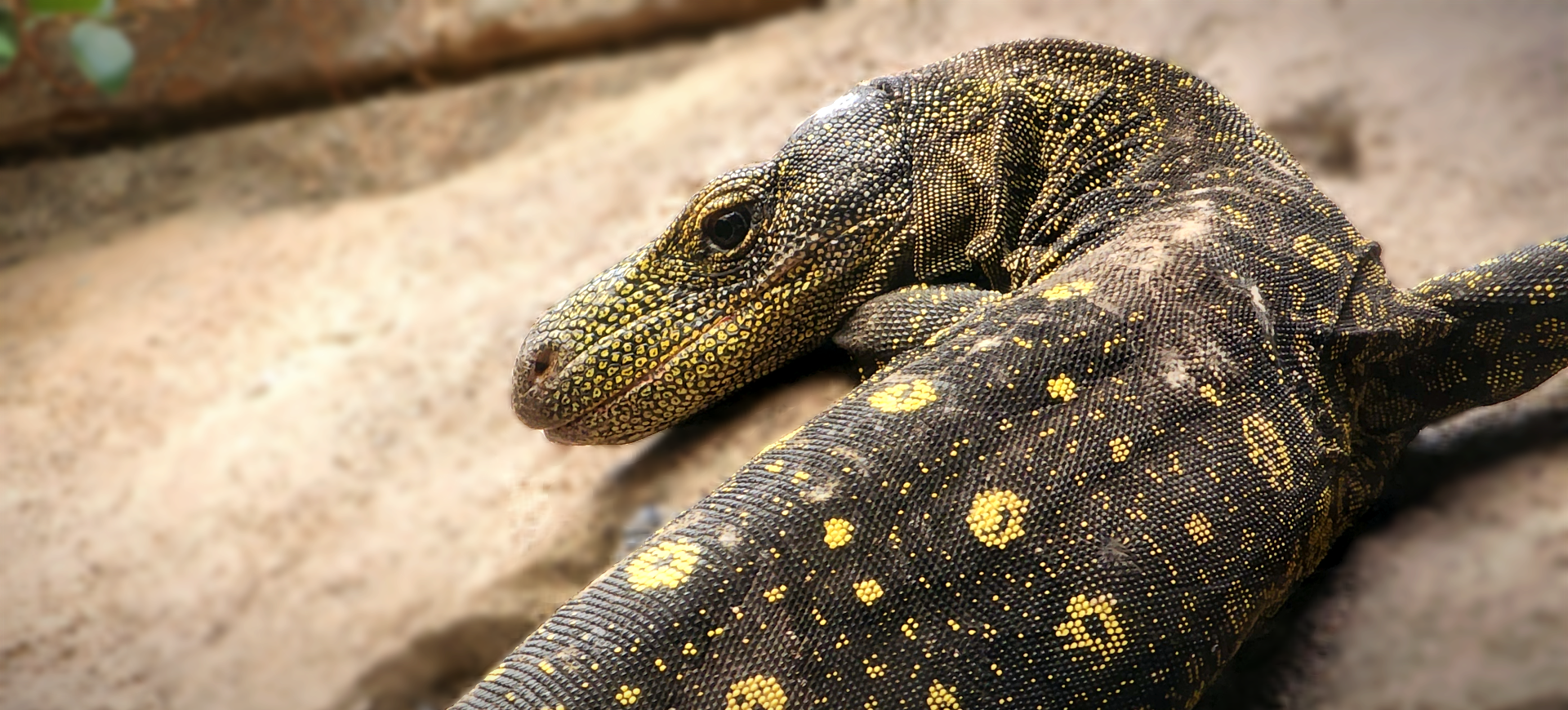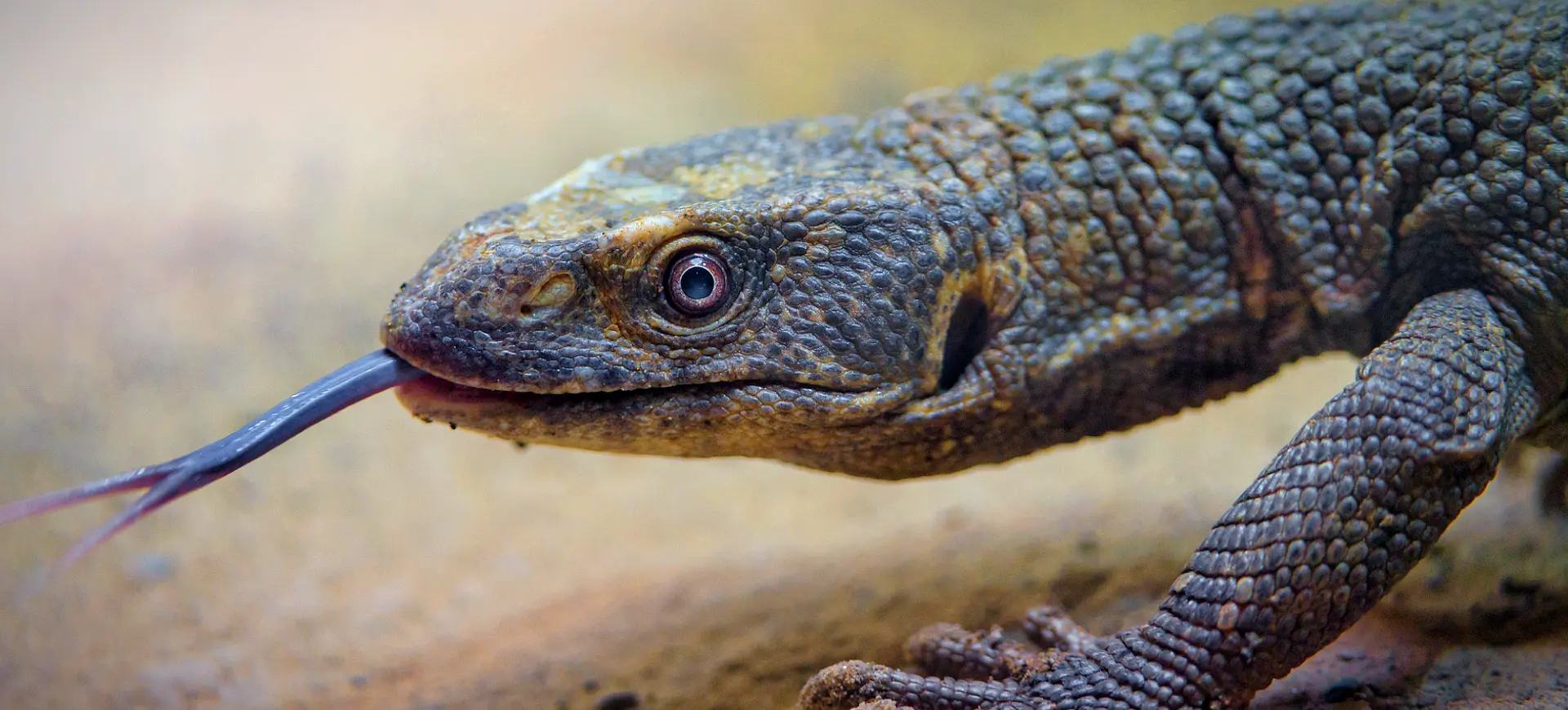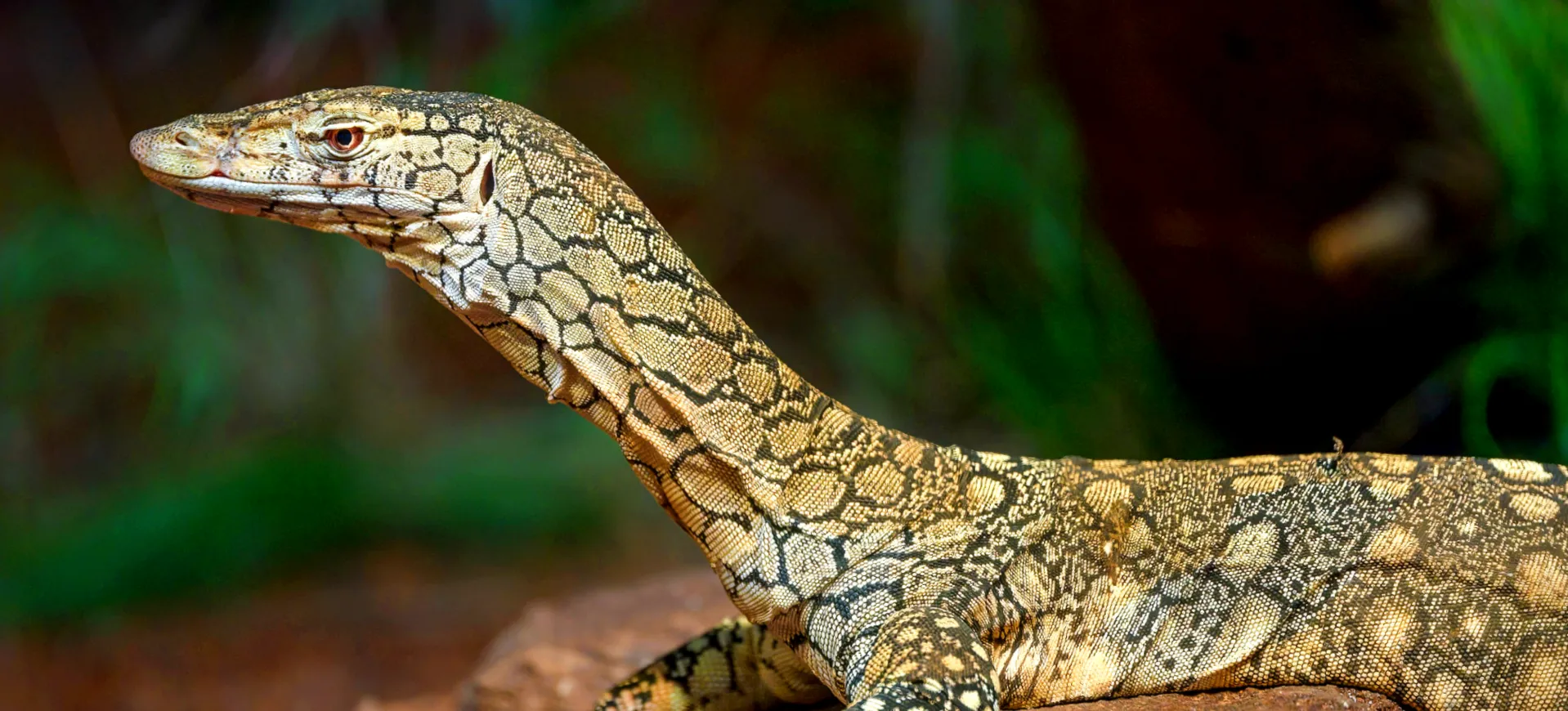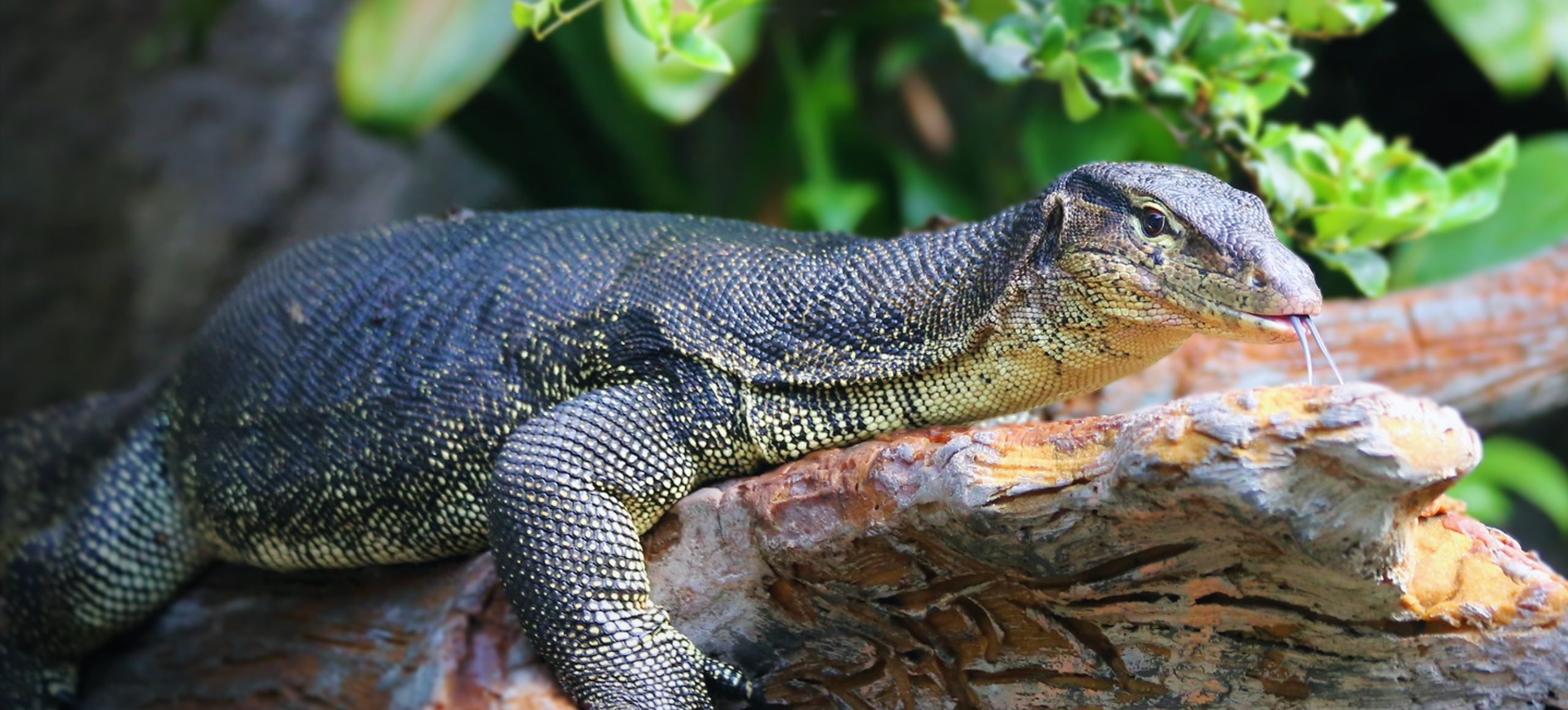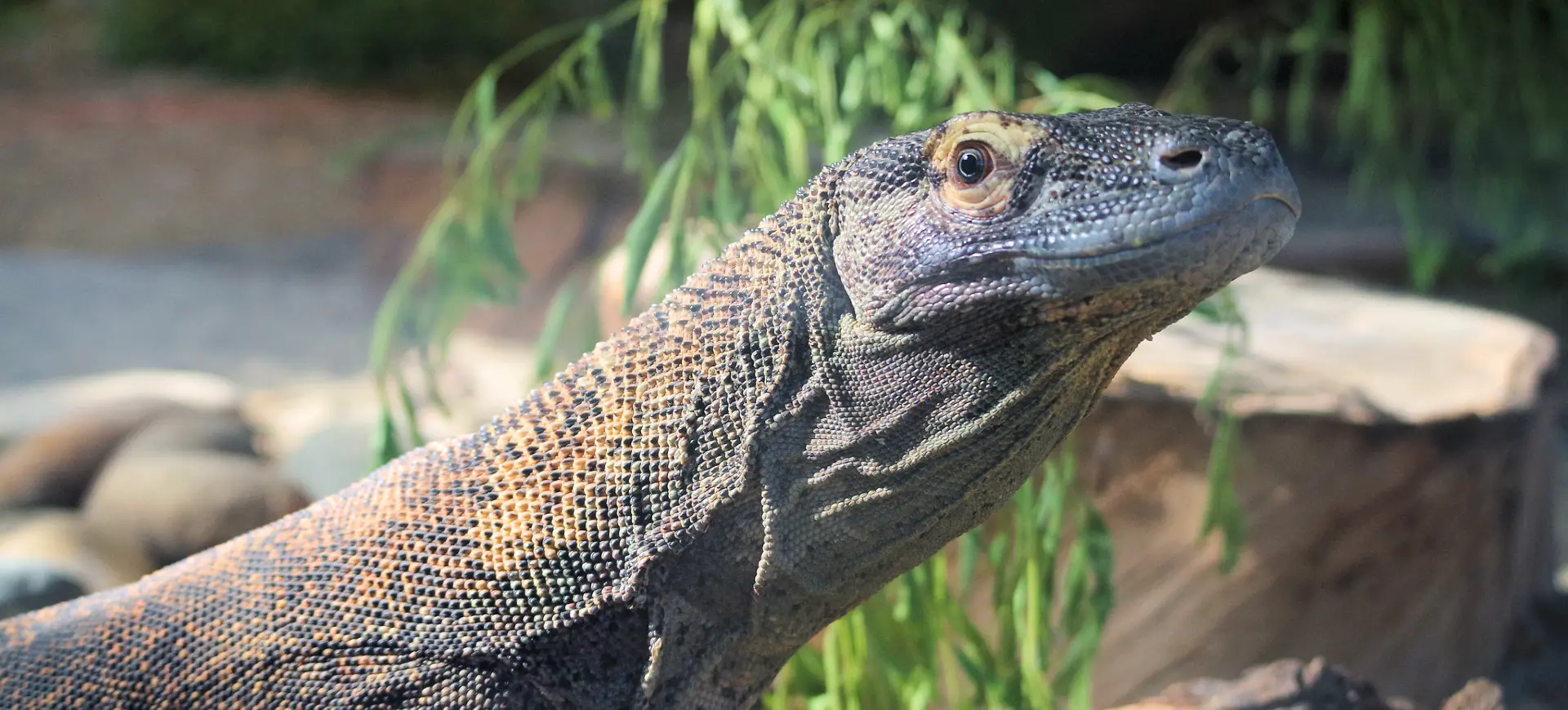Overview
The Nile Monitor (Varanus niloticus) is a large, impressive species of lizard native to Africa, renowned for its strength, agility, and adaptability. Characterized by its robust body, powerful limbs, and long, muscular tail, this monitor lizard can reach lengths of up to 2 meters (6.5 feet), making it one of the largest lizards on the African continent. Its skin is adorned with distinctive patterns of yellow and black markings, which provide camouflage in its natural habitat. The Nile Monitor is highly aquatic but adept at climbing and digging, demonstrating remarkable versatility in its behavior and habitat utilization.
Nile Monitors are opportunistic predators and scavengers, feeding on a wide range of prey, including fish, birds, small mammals, eggs, and carrion. Their strong swimming abilities make them proficient hunters in aquatic environments, while their keen sense of smell aids in locating food over large distances. These lizards are also known for their intelligence and problem-solving abilities, often observed using strategies to access food or evade threats. Despite their formidable size and capabilities, Nile Monitors are elusive and tend to avoid human interaction, though they can become aggressive if cornered or threatened.
The species plays a significant role in their ecosystems, acting as predator and prey within the African wildlife hierarchy. They are known to raid crocodile nests to eat eggs, which adds an intriguing dynamic to their ecological interactions. However, their habit of preying on the eggs and young of various species, including some endangered birds and reptiles, sometimes brings them into conflict with conservation efforts.
Physical Description:
Nile Monitors are distinguished by their long, muscular bodies, contributing to their impressive swimming and climbing abilities. Adults can grow to 2 meters (6.5 feet), with their long tails making up about half their total length. Their rough and durable scales protect them from physical threats and environmental elements. The coloration of Nile Monitors consists of dark, olive-green to black backgrounds with beautiful patterns of light yellow to white spots, bands, and stripes that serve as camouflage in their natural habitats.
The head of the Nile Monitor is elongated with a pointed snout, housing sharp teeth and a long, forked tongue, which they use to sense chemicals in the air, aiding in the detection of prey or predators. Their strong, clawed limbs are well-adapted for digging, climbing, and swift movement in water and land. This combination of physical attributes makes the Nile Monitor one of the most formidable predators in its environment.

Lifespan: Wild: ~10 Years || Captivity: ~20 Years

Weight: Male: 13-20 lbs (6-9 kg) || Female: 11-15 lbs (5-7 kg)

Length: Male: 50-84 inches (127-213 cm) || Female: 40-70 inches (101-178 cm)

Top Speed: 28 mph (45 km/h)
Characteristic:
Native Habitat:
Nile Monitors are remarkably adaptable reptiles, thriving in diverse environments across Sub-Saharan Africa and the regions surrounding the Nile River. This range of habitats includes arid deserts, lush savannas, dense forests, and vibrant wetlands, showcasing the species’ remarkable versatility and resilience. Their particular affinity for aquatic environments is notable, with rivers, lakes, and swamps serving as ideal habitats for these monitors. Here, they can often be observed basking on the sun-warmed banks or skillfully swimming in search of food, taking advantage of these water bodies’ abundant resources.
The ability of Nile Monitors to adapt to various habitats has been a crucial factor in their widespread distribution and overall success as a species within the African wilderness. This adaptability allows them to exploit a wide range of food sources and survive in regions that undergo significant seasonal changes in water availability and temperature. Whether navigating the flowing waters of the Nile, foraging in the wetlands, or basking in the desert’s heat, Nile Monitors have evolved to thrive in conditions challenging for many other species. Their presence in such varied habitats underscores the ecological importance of this species and its role in maintaining the balance of the ecosystems it inhabits.
Biomes:
Biogeographical Realms:
Continents:
Countries:
Diet:
Diet & Feeding Habits:
Nile Monitors are carnivorous, demonstrating a highly opportunistic diet that includes fish, frogs, birds, smaller reptiles, insects, small mammals, eggs, and occasionally carrion. They are skilled hunters, utilizing their acute vision and sense of smell to locate prey. In water, they can use their powerful tail as fuel to catch fish and amphibians with surprising speed.
On land, Nile Monitors rely on stealth and speed to ambush prey, using their sharp claws and teeth to seize and dismember it. They are also known to forage for eggs, employing their strong limbs and claws to dig into nests of birds and reptiles, including crocodiles. This diverse diet allows them to adapt to various environments and contributes to their status as a top predator in their ecosystem.
Mating Behavior:
Mating Description:
Nile monitors exhibit a polygynous mating system in which males compete to access females during the breeding season. Males engage in ritualized combat, using their tails as weapons to establish dominance and the right to mate. The breeding season typically occurs in the rainy season, when food is abundant, and environmental conditions favor egg development. Females lay their eggs in burrows or termite mounds, where the controlled temperature and humidity facilitate optimal incubation conditions.
The eggs are laid approximately a month after mating, and the clutch size can range from 20 to 60 eggs, depending on the size and condition of the female. Incubation periods vary but generally last about 6 to 9 months, with temperature playing a crucial role in determining the sex of the offspring. Hatchlings are independent from birth, possessing the instincts and abilities to survive without parental care. The early life stage of Nile monitors is fraught with predation risks, and they rely on camouflage and agility to evade predators.
Reproduction Season:
Birth Type:
Pregnancy Duration:
Female Name:
Male Name:
Baby Name:
Social Structure Description:
Nile monitors are largely solitary animals, coming together only during the breeding season. They are territorial, with males particularly aggressive towards other males encroaching on their territory. Territories are established and defended using visual displays, vocalizations, and physical confrontations. The size of a territory depends on the availability of resources such as food and suitable nesting sites.
Within their territories, Nile monitors have a range of behaviors, including basking, foraging, and burrow use, which are critical for their survival. Social interactions outside of the breeding season are rare and do not form social groups. However, in areas with high food concentration, such as garbage dumps or fish processing areas, Nile monitors may be seen congregating, driven by the abundance of easily accessible food. These gatherings are not social but opportunistic, highlighting their adaptability and survival strategies.
Groups:
Conservation Status:
Population Trend:
The Nile monitor is currently classified as Least Concern by the IUCN, indicating a stable population across its extensive range in Africa. Despite facing threats from habitat destruction, pollution, and the pet trade, Nile monitors have shown resilience, thanks partly to their adaptability to varied environments. Their ability to thrive in natural and human-altered landscapes has helped maintain their numbers, though specific populations may experience localized pressures. Conservation efforts, including habitat protection and trade regulation, ensure the species’ long-term survival.
Invasive populations, such as those in Florida, are monitored due to their potential impact on local ecosystems. The adaptability of Nile monitors, while beneficial for their survival, poses challenges for conservation in areas where they are not native. Research and management strategies aim to understand their ecology and mitigate any negative effects on native species. Public awareness and engagement are also important components of conservation efforts, helping to reduce illegal trade and promote coexistence with this remarkable species.
Population Threats:
The Nile monitors face several threats, including habitat destruction due to agricultural expansion, urbanization, and pollution. These environmental changes can lead to loss of critical habitat and food sources, impacting their survival. Additionally, Nile monitors are hunted for their skin, which is used in the leather industry, and for their meat in some parts of Africa, adding to the pressures on their populations. The pet trade also poses a significant threat, as they are often captured and sold illegally, which can result in overexploitation and stress on wild populations.
Invasive species management is another challenge, particularly in areas where Nile monitors have been introduced outside their native range. These non-native populations can disrupt local ecosystems by preying on or competing with indigenous species. Efforts to control their population and mitigate their impact are necessary to protect native wildlife. Climate change also presents a long-term threat, potentially altering their habitats and affecting their distribution and breeding patterns.
Conservation Efforts:
Conservation efforts for Nile monitors include habitat protection and restoration to ensure access to suitable feeding, breeding, and shelter environments. Trade regulation is crucial, with international agreements like CITES controlling the movement of Nile monitors across borders to prevent illegal trade. Education and awareness programs are essential in reducing demand for Nile monitors as pets and informing the public about their ecological role. Research into their ecology, behavior, and population dynamics is ongoing, providing data to inform conservation strategies and management practices.
In regions where Nile monitors are invasive, efforts focus on monitoring their impact, controlling their spread, and, where possible, removal. These actions aim to protect native species and maintain biodiversity. Conservation programs also involve local communities, recognizing the importance of their knowledge and involvement in sustainable management practices. Partnerships between governments, conservation organizations, and communities are key to effectively conserving Nile monitors and their habitats.
Additional Resources:
Fun Facts
- Nile monitors can grow to be the second-largest reptile in the Nile River ecosystem after the Nile crocodile.
- They are among the few animals that actively prey on crocodile eggs, using their keen sense of smell to locate nests.
- Nile monitors are excellent climbers and can be found high in trees, escaping predators or seeking prey.
- They have a unique defense mechanism of whipping their tails, which can deliver painful lashes to deter predators or rivals.
- The leather industry highly values their skin for making shoes, belts, and handbags.
- Nile monitors can swim using an undulating motion of their body and tail, enabling them to dive and stay submerged for significant periods.
- They have been known to live for over 20 years in captivity, showcasing their longevity with proper care.
- The forked tongue of the Nile monitor works similarly to that of snakes, helping them to sense chemical cues in the environment.
- In some African cultures, Nile monitors symbolize good luck and protection.
- They can run up to 28 mph (45 km/h) on land, making them one of the fastest large lizards.











